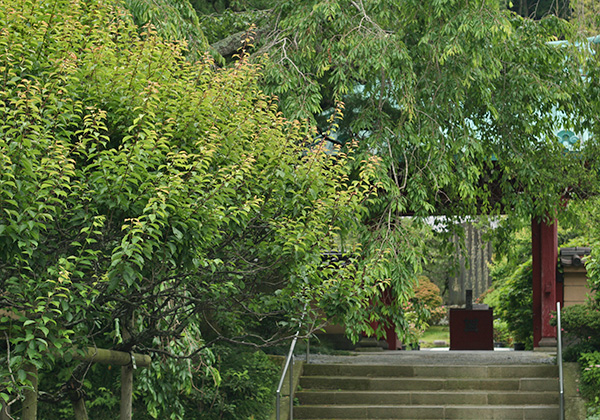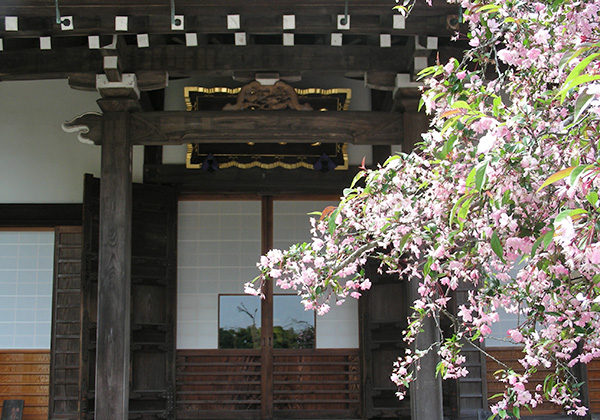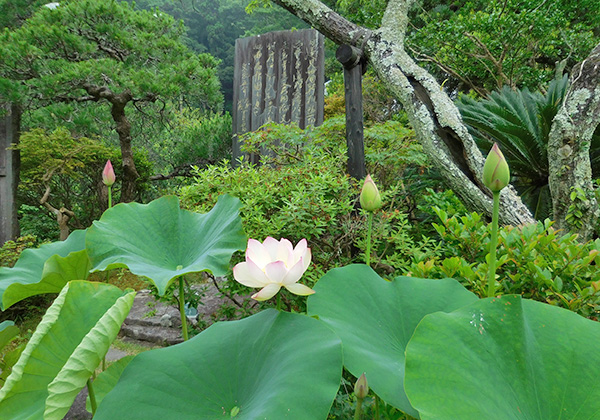Kosokuji
| Official Name | Gyojizan Kosokuji {Pronounced gyo-gee-zan koh-sok-gee} |
|---|---|
| Religious sect | Nichiren sect, Buddhism |
| Founded | in 1274 by Mitsunori Yadoya {me-tsu-noh-re yah-doh-yah} |
| Founding priest | Nichiro {nee-chee-roh} |
| Main object of worship | Odaimoku tablet, Statues of Nichiren and others |
| Address | 9-7, Hase 3-chome, Kamakura, Kanagawa 248-0016 (show route from current location ) |
| Location | 1,700 meters west southwest of Kamakura Station |
| Time needed to get there | 25 minutes |
| Admission | JPY100 |
| Open | 8:00 - 17:00 |
| Phone number | 0467-22-2077 |
| Restrooms | Not available |
Historical Overview
The site where the Temple stands today used to be a private residence of Mitsunori Yadoya (birth and death years unknown), the founder of the Temple and one of the seven immediate retainers for Fifth Regent Tokiyori Hojo {toh-kee-yoh-re hoh-joe} (1227-1263). Writing the famous treatise entitled "Pacifying the State by Establishing Orthodoxy", Priest Nichiren (1222-1282), the founder of Nichiren Sect Buddhism, looked for someone who would help deliver it to the Regent. He thought Mitsunori Yadoya would be most suitable and asked him for help. Mitsunori accepted the request and forwarded the treatise to the Regent for his review. It was back in 1260. In the treatise, Priest Nichiren asserted that the right and authentic Buddhism doctrine is in Hokkekyo or the Lotus Sutra, none others, and criticized fiercely all other sects' doctrines including Zen, in which Tokiyori himself believed.
As had been expected, not only was his treatise rejected, but also he offended the Regent badly. Undaunted, Priest Nichiren continued his campaigns undergoing a series of persecutions. In 1271, he was put on trial and sentenced to death. He was nearly beheaded, but was saved by a miracle at the last moment, and was exiled to an island called Sado {sah-doh} off the coast of Niigata Prefecture.
At the same time, Priest Nichiren's five disciples were collectively arrested on charge of aid and abet, and detained in a cavern at Mitsunori's residence. Included among them was Priest Nichiro (1243-1320), one of the Six Great Disciples of Priest Nichiren and the founding priest of Myohonji. He joined the Nichiren sect when he was 10 years old, and so close and attentive to Priest Nichiren that it was said, "Wherever the Priest may go, there is always Nichiro with him."
Though Mitsunori was supposed to keep watch on the five confinees like a jailer, he cordially treated them, and Priest Nichiro reciprocated his cordiality. During the confinement, Mitsunori was deeply moved by Priest Nichiro's manner and his loyalty toward Priest Nichiren. At the end of the one-month confinement, Mitsunori who naturally had belonged to Zen sect as a retainer of Tokiyori, began to embrace Priest Nichiro's teachings. As Tokiyori had already been dead for several years, Mitsunori finally converted to the Nichiren sect, and successfully lobbied for an earlier release of Priest Nichiren in exile. He even remodeled his residence to a temple and presented it to the Nichiren sect Buddhists, requesting Priest Nichiro to be the first chief priest. Thus, the present-day Kosokuji was established.
Mitsunori can be read Kosoku in Chinese ideographs, hence the name of Kosokuji. The first part of the official name "Gyoji" came from his father's name "Yukitoki" which also can read Gyoji in Chinese character.
The cavern Priest Nichiro and others were detained back in 1271 exists today at the north corner behind the graveyard. The Temple is rather small and structures consist of Sanmon gate, the main hall and priest's living quarter only. In contrast to Daibutsu and Hasedera in the vicinity, visitors are scarce here except for the flower seasons.
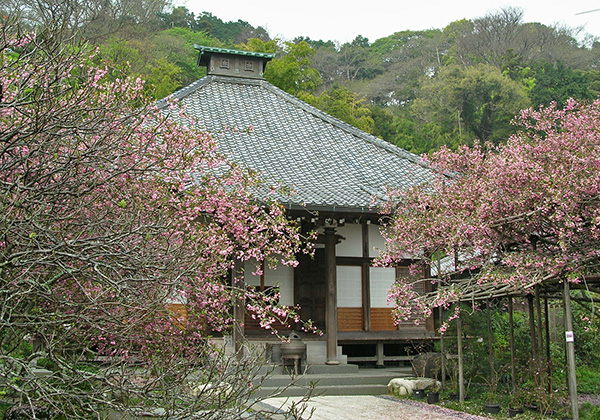
Sanmon gate
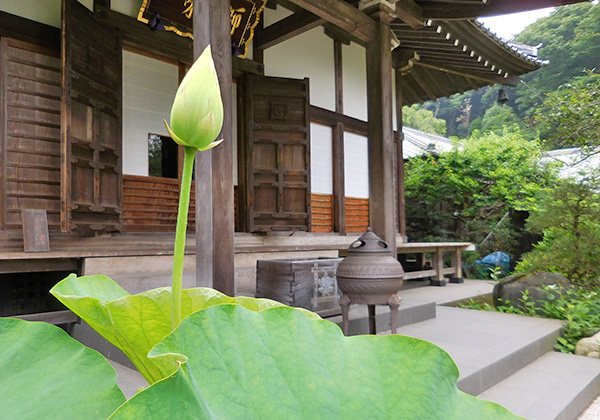
An offertory box is placed in the center. Visitors are requested to toss in 100 yen.
Main Hall
Rebuilt in 1650, the main hall houses nearly 10 statues: Those of Priest Nichiren fashioned in 1661, Priest Nichiro and his four colleagues' made in 1673, who were confined in the cavern, and a nun named Ohbai-in of 1844 make. The main objects of worship are the statue of Priest Nichiren and the Odaimoku tablet on which the formulary words Nam-myo-ho-ren-gek'kyo are inscribed by Priest Nichiren himself while he was in exile. The door is usually closed, but sometimes slightly ajar. Visitors may be allowed to peer in after worshipping in proper manner. On the dimly lit altar are statues mentioned above with that of Priest Nichiren in the center. Be sure to take your shoes off when you climb the wooden steps.
